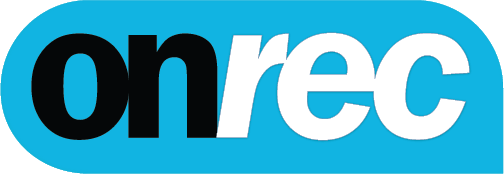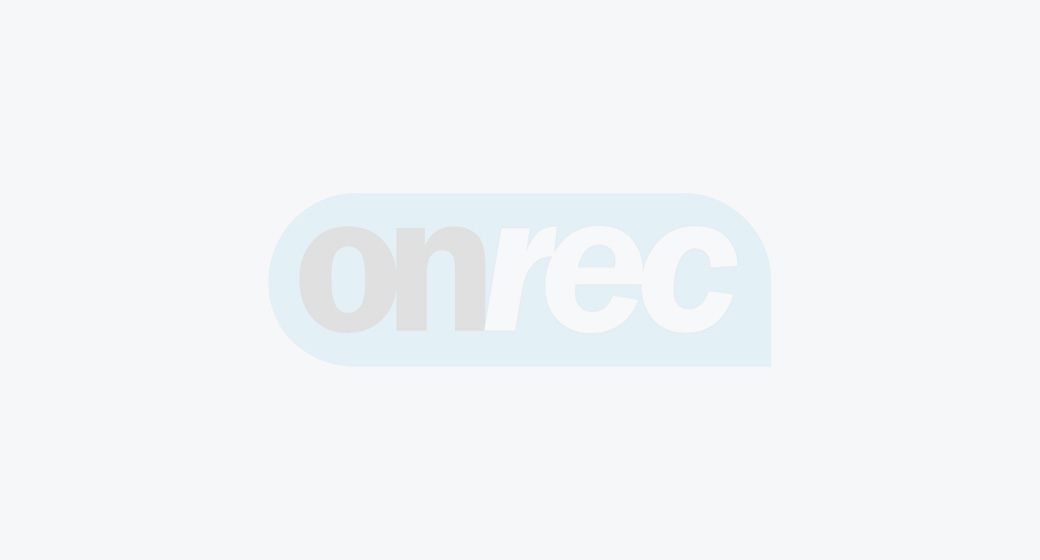You try everything—run paid ads, post on social media, and update your website. But even after all that, growth can still feel slow, expensive, and all over the place.
That’s when partnerships changed everything for me.
Instead of trying to get one user at a time, I started teaming up with other tools. These tools had the same type of users I wanted, but they didn’t compete with me. We weren’t rivals—we just served the same market in different ways.
And no, these weren’t big business deals. There were no fancy mergers or big company tie-ups. Most of the time, these were simple, helpful deals.
In this post, I’ll walk you through what I did step by step. I’ll share the exact kinds of partnerships that helped me the most. And if you’re a solo founder or just starting your SaaS journey, I’ll show you how you can do this too, without spending all your money on ads.
Let’s dive in.
Why Partnerships Work for SaaS Growth
What makes partnerships so powerful in the SaaS world isn’t just exposure; it’s context.
(source)
When you team up with a tool your audience already uses and trusts, you skip the warm-up. You’re borrowing relevance and riding on familiarity. This reduces the friction users feel when trying something new.
Here’s why this model works so well:
-
Borrowed trust: When another tool recommends you, your product is viewed through the lens of that existing relationship. You don’t have to build credibility from scratch.
-
Cross-promotion: Two tools, two email lists, two user bases. You each double your reach with half the effort.
-
Shared user intent: When someone uses a CRM, chances are they also need email automation. That overlap creates natural alignment and leads.
-
Faster ROI: Unlike SEO or PPC, which take months or significant spend to see results, partnerships can start driving traffic and signups almost immediately.
Most importantly, they scale without scaling costs. You’re not paying for impressions or clicks—you’re building compounding value with every collaboration.
Types of Tools You Can Partner With
Not all SaaS partnerships make sense. The best ones live in the sweet spot between “same audience” and “different use case.” You want complementary, not competitive.
Here are a few partner types that worked well for me:
-
Complementary SaaS tools: If your product handles email marketing, partnering with a CRM makes sense. If you offer analytics, a landing page builder, or a digital image clipper, it is a strong fit.
-
Browser extensions and add-ons: These are lightweight, often under-marketed tools that have super-engaged user bases. If your tool extends their value, a partnership feels natural.
-
Zapier or API integrations: A simple Zap can unlock thousands of new users who already use both tools but want them to work together. You don’t need a full native integration—just a functional bridge.
-
Productivity platforms: Tools like Notion, Slack, Trello, or Airtable host massive ecosystems. Listing your product as an extension or creating templates that plug into their workflows gives you discoverability and built-in context.
-
AI tools with overlap: As more tools integrate AI, partnering with other AI-powered tools and products in different niches (e.g., copywriting vs. summarization) can create a mutually beneficial loop, especially when targeting similar business users.
I started by mapping out the ecosystem around my users—what else they used, where they were most active, and what pain points my tool didn’t solve. From there, it became clearer which tools made sense to approach.
How I Identified the Right Partners
I didn’t start with a giant list. In fact, my earliest partnerships came from noticing what tools my users already mentioned in support tickets or onboarding emails.
(source)
Here’s what I looked for:
-
Tools my users were already using: If a name came up more than once in conversation or support threads, I took notice.
-
Products solving adjacent problems: I focused on tools that completed my users’ workflows, without overlapping with mine.
-
Active communities and founders: I leaned into the Indie Hacker/Product Hunt world, where other solo or small-team SaaS founders were open to quick, lean experiments.
I built a simple Notion table to track prospects. Each entry had columns like:
-
User overlap (high/medium/low)
-
Channel fit (email, content, integrations)
-
Contact info
-
Last outreach
-
Notes on interest or alignment
From there, I started cold outreach—nothing pushy, just a short email explaining the mutual value. Something like:
“Hey [Name],
I’ve noticed a lot of [Your Tool] users also rely on [Their Tool] to handle [X].
I run [Your Tool], and I think there’s a natural fit here.
Any interest in a quick co-promo or integration idea that could help both our users win?”
Thanks,
My name
About 40% of these got responses. A few turned into long-term partners. Most importantly, each one taught me something about positioning and user alignment.
Different Ways I Partnered With Tools
Once I had a few aligned tools, I explored multiple formats for collaboration. Some required development. Others were just a couple of emails and a blog post.
Co-marketing Campaigns
This type of partnership was the simplest and often the most effective. We’d create a shared promo plan around a topic that overlapped for both of our audiences.
(source)
Example:
We ran a campaign with an email verification tool. They cleaned up lists, and we helped send better emails. We swapped newsletter mentions, wrote companion blog posts, and shared each other’s content on LinkedIn.
Results:
-
+22% increase in email signups that week
-
3 new backlinks
-
Stronger brand perception through association
Webinars, Blog Swaps, and Newsletter Mentions
We skipped the scary live events and chose a smarter path. We partnered with others to create short, focused webinars and Q&A videos using Loom. No stress about live audiences or tech problems. We made clean, easy-to-watch content that people could view anytime. Plus, we could use it again and again.
For blog swaps, we put real thought into each trade. We wrote guest articles on topics that mattered to both audiences. Each post packed value and naturally linked back to our products.
The secret sauce? Getting our content seen. We sent every post to both our email lists. This gave us twice the reach with half the work.
But the newsletter mentions really made things take off. Even a tiny shoutout—like "Tool of the Week"—worked amazingly well. That one line in a trusted email brought us tons of qualified visitors ready to engage. Simple? Yes. But it worked like magic.
In-App Integrations and Embeds
This took more work, but paid off long-term. We built a simple integration with a task manager where users could export our analytics into their platform.
In another case, we allowed their plugin to be embedded directly into our interface, which enhances value for our users and gives them brand exposure.
Bundled Offers & Lifetime Deals
One of the most impactful moves was bundling my SaaS with other niche tools into a single offer. We created a "Creator Stack" that included 4 tools with one-time access, each handling a different piece of the workflow.
(source)
This gave users a ton of value at a low price—and drove traffic for all of us.
We distributed it through our email lists, affiliate channels, and platforms like AppSumo. It generated a surge in signups without spending a dollar on ads.
Exclusive Discounts via Collaborative Platforms
We also partnered with newer SaaS marketplaces and micro-launch sites to offer joint discounts. Think: “Buy this email platform and get 20% off our reporting tool.” This worked well because the incentives were aligned, and we weren’t cannibalizing revenue—just giving users more reasons to say yes.
These smaller communities, such as SaaSZilla or SaaS Pirate, were eager for offers like this. The key was to provide their audience with something tailored and useful, rather than just another promo code.
Guest Features & “Partner Pages”
One quiet win was getting on partner pages. Many SaaS tools have directories where they list their partners and integrations.
After any joint project, even a small marketing effort, I would ask them to add our link to their site. These links improved our SEO and brought a steady stream of qualified visitors each month.
We also built our own "Partners" page and featured these tools with links back to them. This made us look more connected and established than we really were early on.
Affiliate Arrangements & Mutual Referrals
For partners who didn’t want to do big campaigns or integrations, we set up affiliate links and tracked referrals. It was low-effort on their part and still gave them an incentive to share our tool.
(source)
In return, we gave back the same way. We added their tools to our onboarding guide, recommended them in our newsletters, and wrote about them in blog posts. This helped our users get more value while keeping our partnerships strong and active.
The Results: What Changed After Partnering
Once the first few partnerships went live, the impact was immediate and measurable.
Here’s what we saw within the first 60 days:
-
Trial signups jumped 35% from baseline averages
-
Customer acquisition cost (CAC) dropped by 42% compared to paid channels
-
Our backlink profile improved, leading to a 12% increase in organic traffic
-
User retention improved when paired tools were integrated—people stuck around longer because they got more value
But the biggest benefit wasn’t just growth—it was momentum. Each win gave us social proof and opened doors to bigger partners. Every new connection made the next one easier.
Here’s a simple comparison from our internal dashboard:
The best part? We weren’t dependent on ads anymore. We built a repeatable, scalable growth engine through collaboration, not competition.
How to Start If You’re a Small or Solo SaaS Founder
You don’t need a marketing team or complex infrastructure to make this work. Here’s how to get started with a partnership, even if you’re doing it all yourself.
Use Simple Outreach Scripts
A short, clear message goes a long way. Here’s a version that got me replies from tools with 10–50K users:
“Hey [First Name],
I run [Your Tool], which helps [target audience] do [value prop].
I noticed our users often also use [Their Tool].
Wondering if you'd be open to a quick win-win promo—could be a shout-out, integration idea, or joint offer.
No pressure at all, just exploring. Let me know if you're open.”
Talk soon,
Name
Personalize it with context (e.g., a blog post they wrote, your shared users), and you’re far more likely to get a response.
MVP Integration Ideas
(source)
You don’t need to code a native integration. Start with:
-
Zapier recipes
-
A simple iframe embed
-
Shared templates or workflows
-
A checklist showing how to use both tools together
Even small integrations show intent and give you something to promote.
Use Niche Communities
Platforms like Indie Hackers, Product Hunt, and r/SaaS are full of other founders looking to collaborate. Reach out, post about your tool, or create a simple “looking to partner” thread.
Some of my best early deals came from casual Slack chats or DMs in Twitter groups.
Start Small and Build Up
Your first partnership doesn’t need to be huge. A single email mention or a content swap can make a noticeable dent in your numbers. Once you get momentum, more opportunities come naturally.
Tools That Made the Process Easier
Running partnership campaigns well isn't just about having a plan. You need to stay organized and use the right tools to save time.
Here’s what helped me stay on track:
CRM or Notion Template for Partner Tracking
I used a Notion table to manage every stage of my outreach:
-
Partner name
-
Phone number, email
-
Type of collaboration (content, integration, affiliate, etc.)
-
Contact status
-
Links to shared assets or promo material
-
Outcomes (traffic, conversions, follow-up notes)
If you prefer something more formal, a lightweight CRM like Pipedrive or HubSpot works just as well.
Calendly or TidyCal for Meetings
Coordinating calls with founders or marketing teams was simple thanks to Calendly. I just sent a link, they picked a time, and we were set. No back-and-forth needed.
For more budget-conscious folks, TidyCal is a great one-time purchase alternative that does the job without recurring fees.
Cold Email Tools
If you're doing a lot of outreach, cold emailing tools like Smartlead, Mailshake, or Instantly.ai are perfect for sending personalized emails at scale. You can set automated follow-ups and track open rates to optimize over time.
You could also consider setting up a newsletter with Mailchimp or another email marketing provider. Send regular updates on the partnerships you are working on, and this helps reactivate partners who have gone cold.
Affiliate & Referral Tracking
To manage and incentivize referrals, I used Rewardful. It integrates with Stripe, supports recurring commissions, and has a clean dashboard. Tapfiliate and FirstPromoter are also solid choices.
These tools made it possible to track everything, such as who was sending traffic, how much revenue they generated, and whether we needed to adjust commission rates or bonuses.
Conclusion
Partnerships helped me grow faster, cheaper, and with less guesswork. They weren't just "nice to have"; they became the backbone of my SaaS strategy.
Instead of spending only on ads or trying endless growth hacks, I found tools with real audiences and built win-win relationships. And it worked.
If you're building a SaaS, especially as a solo founder or small team, partnerships are one of the cheapest, most powerful growth tools you can use. Start small. Reach out to tools your users already trust. Suggest simple projects together. Track what works.
You don't need a huge network to start. You just need one "yes." And that one "yes" can bring you your next hundred users.
FAQs
Q: How long does it take to see results from a SaaS partnership?
A: You can often see traction within 1–3 weeks, especially with content swaps or newsletter mentions. Deeper integrations or affiliate setups may take longer, but they’re worth the investment.
Q: What if I don’t have the technical skills to build integrations?
A: No problem. Start with low-code tools like Zapier or Make, or even embed pre-built workflows. You can also focus on co-marketing partnerships before jumping into technical integrations.
Q: Do I need to offer revenue share to partners?
A: Not always. Some partnerships work well with mutual promotion, free access, or co-created content. Reserve revenue share for long-term or performance-based collaborations.
Q: Is it still worth reaching out if my SaaS is new or small?
A: Absolutely. In fact, smaller tools are often more open to partnerships. Focus on shared value and show that you understand their audience.
Q: How many partnerships should I aim for?
A: Start with 2–3 meaningful ones. Focus on quality over quantity. One strong partnership that aligns well can outperform five that are loosely connected.
About the Author:
Jyoti Ray is the founder of OneMinuteSEO, helping businesses grow through smart link building and SEO. He shares actionable growth tactics for marketers. Connect with him on LinkedIn.






